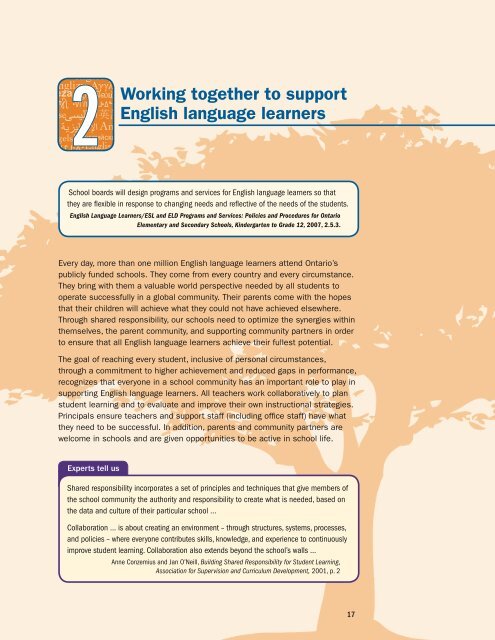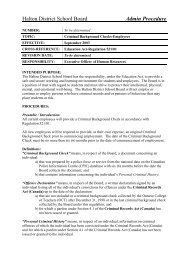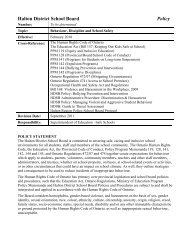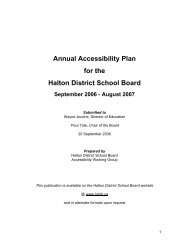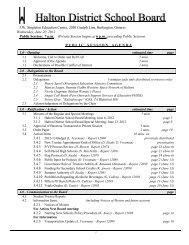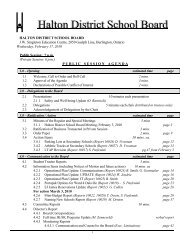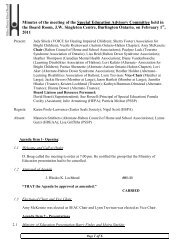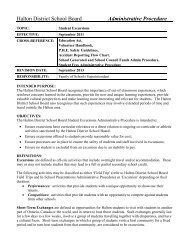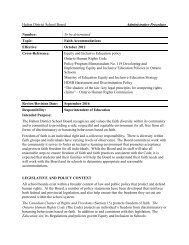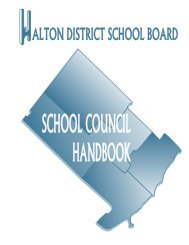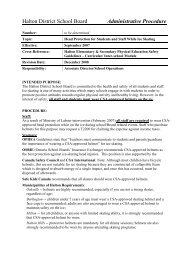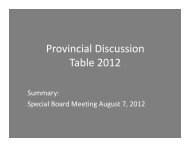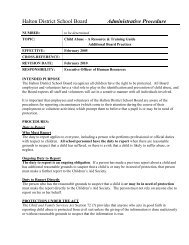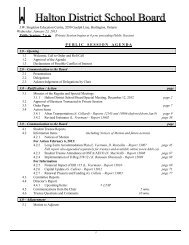Supporting English Language Learners in Grades 1 to 8
Supporting English Language Learners in Grades 1 to 8
Supporting English Language Learners in Grades 1 to 8
You also want an ePaper? Increase the reach of your titles
YUMPU automatically turns print PDFs into web optimized ePapers that Google loves.
2<br />
Work<strong>in</strong>g <strong>to</strong>gether <strong>to</strong> support<br />
<strong>English</strong> language learners<br />
School boards will design programs and services for <strong>English</strong> language learners so that<br />
they are flexible <strong>in</strong> response <strong>to</strong> chang<strong>in</strong>g needs and reflective of the needs of the students.<br />
<strong>English</strong> <strong>Language</strong> <strong>Learners</strong>/ESL and ELD Programs and Services: Policies and Procedures for Ontario<br />
Elementary and Secondary Schools, K<strong>in</strong>dergarten <strong>to</strong> Grade 12, 2007, 2.5.3.<br />
Every day, more than one million <strong>English</strong> language learners attend Ontario’s<br />
publicly funded schools. They come from every country and every circumstance.<br />
They br<strong>in</strong>g with them a valuable world perspective needed by all students <strong>to</strong><br />
operate successfully <strong>in</strong> a global community. Their parents come with the hopes<br />
that their children will achieve what they could not have achieved elsewhere.<br />
Through shared responsibility, our schools need <strong>to</strong> optimize the synergies with<strong>in</strong><br />
themselves, the parent community, and support<strong>in</strong>g community partners <strong>in</strong> order<br />
<strong>to</strong> ensure that all <strong>English</strong> language learners achieve their fullest potential.<br />
The goal of reach<strong>in</strong>g every student, <strong>in</strong>clusive of personal circumstances,<br />
through a commitment <strong>to</strong> higher achievement and reduced gaps <strong>in</strong> performance,<br />
recognizes that everyone <strong>in</strong> a school community has an important role <strong>to</strong> play <strong>in</strong><br />
support<strong>in</strong>g <strong>English</strong> language learners. All teachers work collaboratively <strong>to</strong> plan<br />
student learn<strong>in</strong>g and <strong>to</strong> evaluate and improve their own <strong>in</strong>structional strategies.<br />
Pr<strong>in</strong>cipals ensure teachers and support staff (<strong>in</strong>clud<strong>in</strong>g office staff) have what<br />
they need <strong>to</strong> be successful. In addition, parents and community partners are<br />
welcome <strong>in</strong> schools and are given opportunities <strong>to</strong> be active <strong>in</strong> school life.<br />
Experts tell us<br />
Shared responsibility <strong>in</strong>corporates a set of pr<strong>in</strong>ciples and techniques that give members of<br />
the school community the authority and responsibility <strong>to</strong> create what is needed, based on<br />
the data and culture of their particular school …<br />
Collaboration … is about creat<strong>in</strong>g an environment – through structures, systems, processes,<br />
and policies – where everyone contributes skills, knowledge, and experience <strong>to</strong> cont<strong>in</strong>uously<br />
improve student learn<strong>in</strong>g. Collaboration also extends beyond the school’s walls …<br />
Anne Conzemius and Jan O’Neill, Build<strong>in</strong>g Shared Responsibility for Student Learn<strong>in</strong>g,<br />
Association for Supervision and Curriculum Development, 2001, p. 2<br />
17


